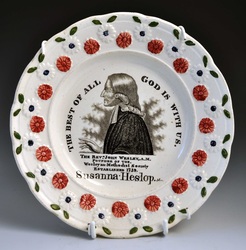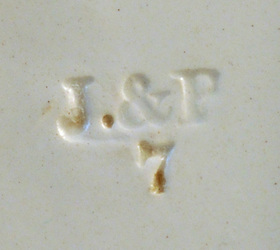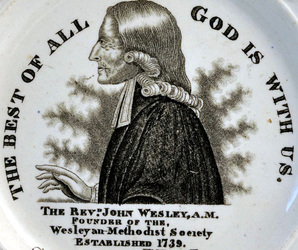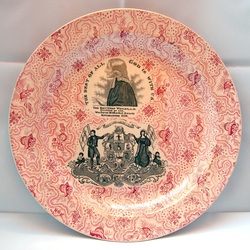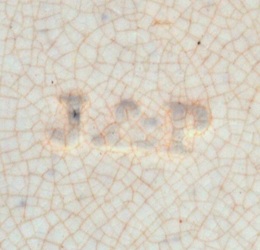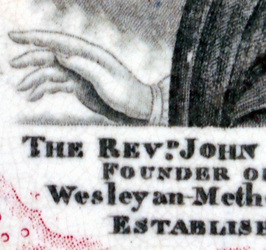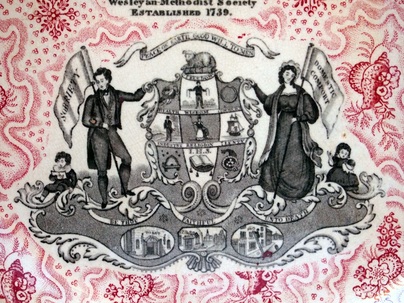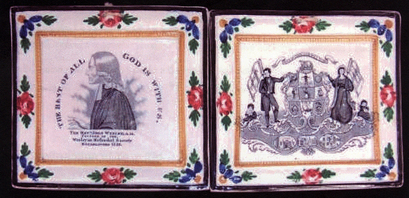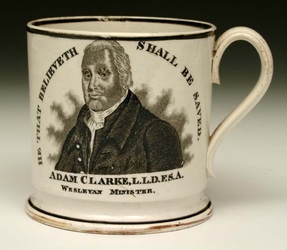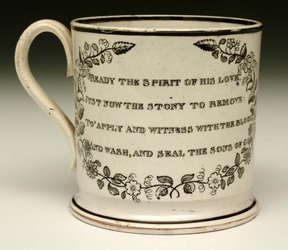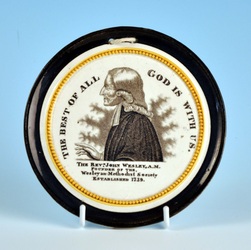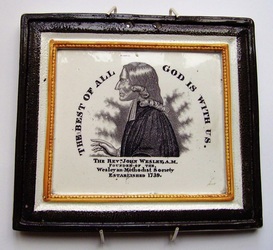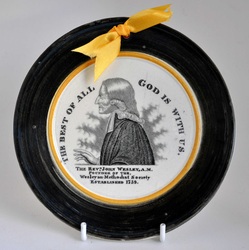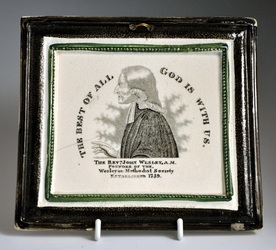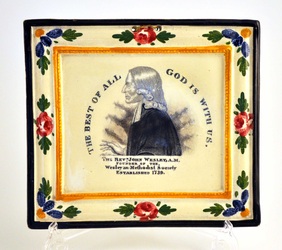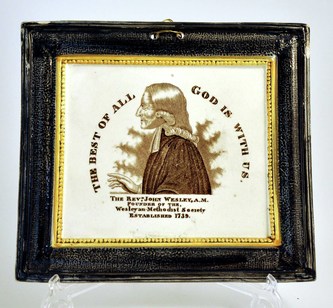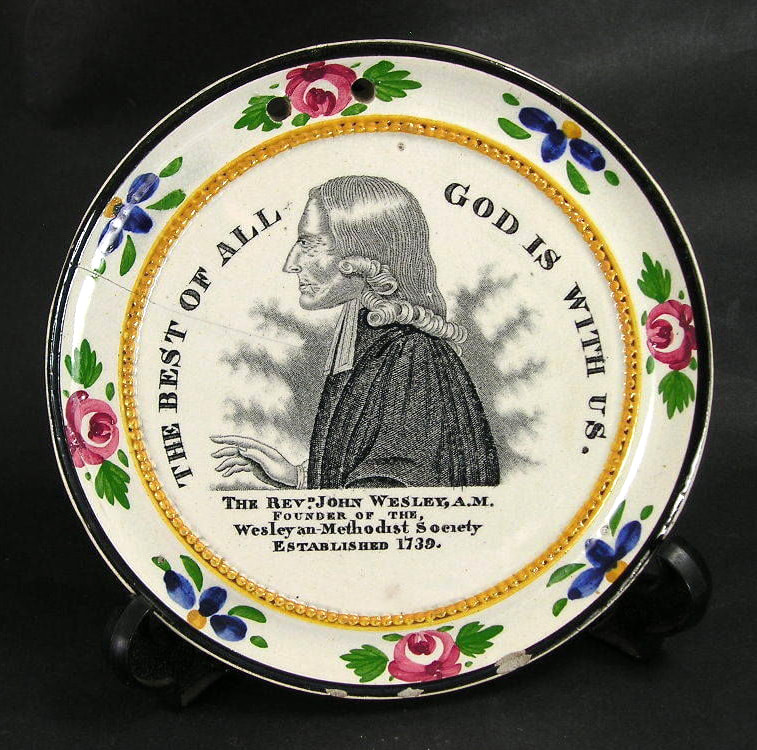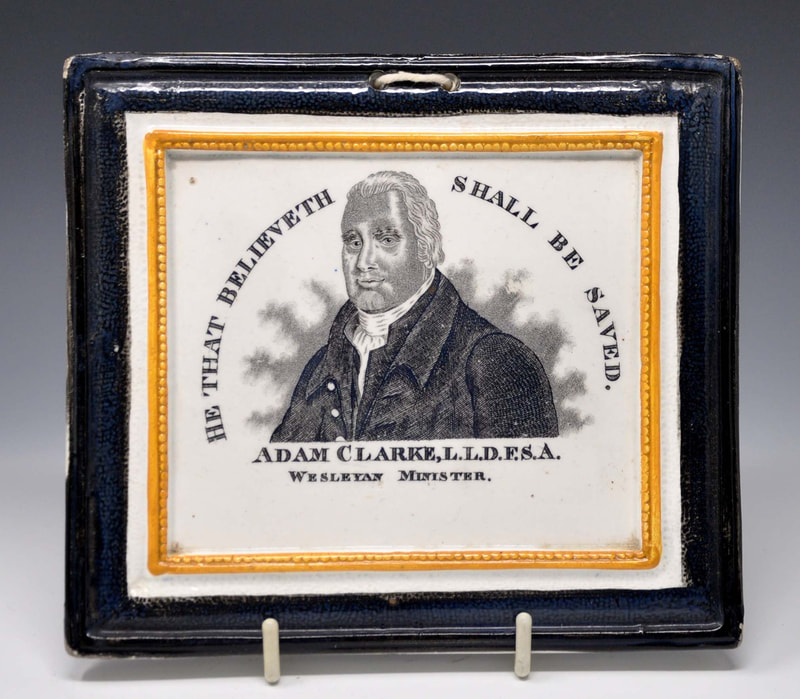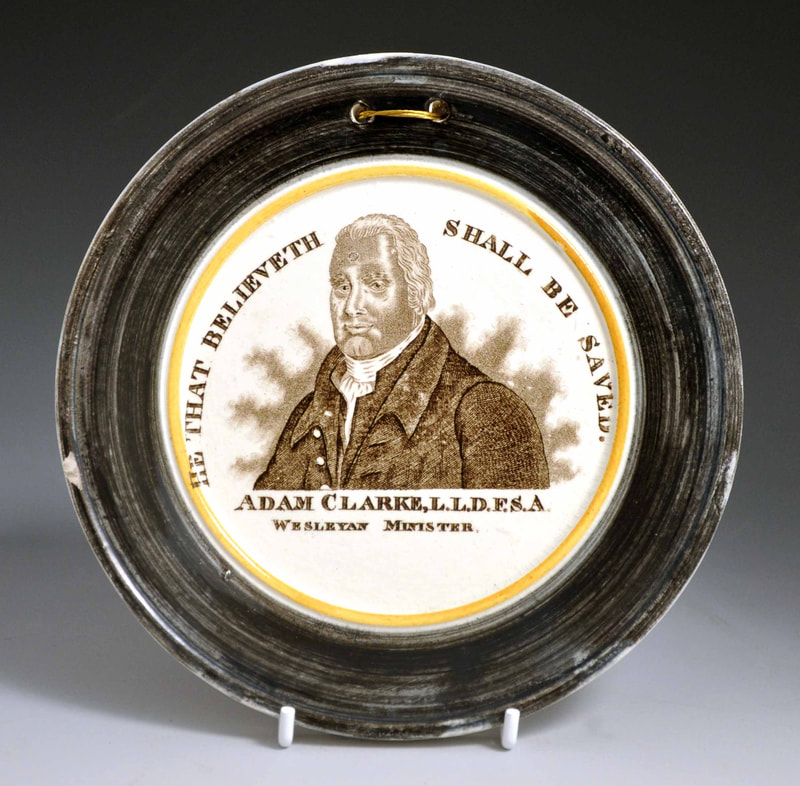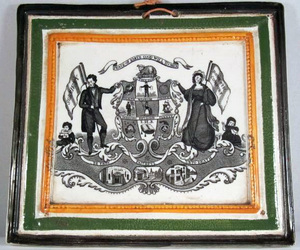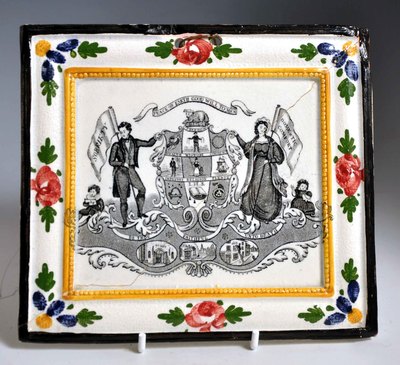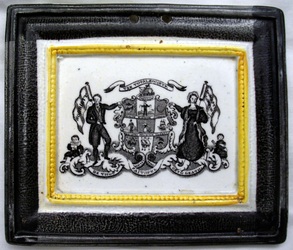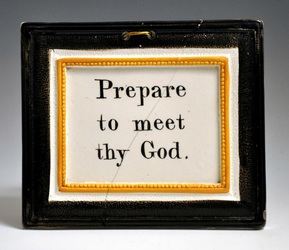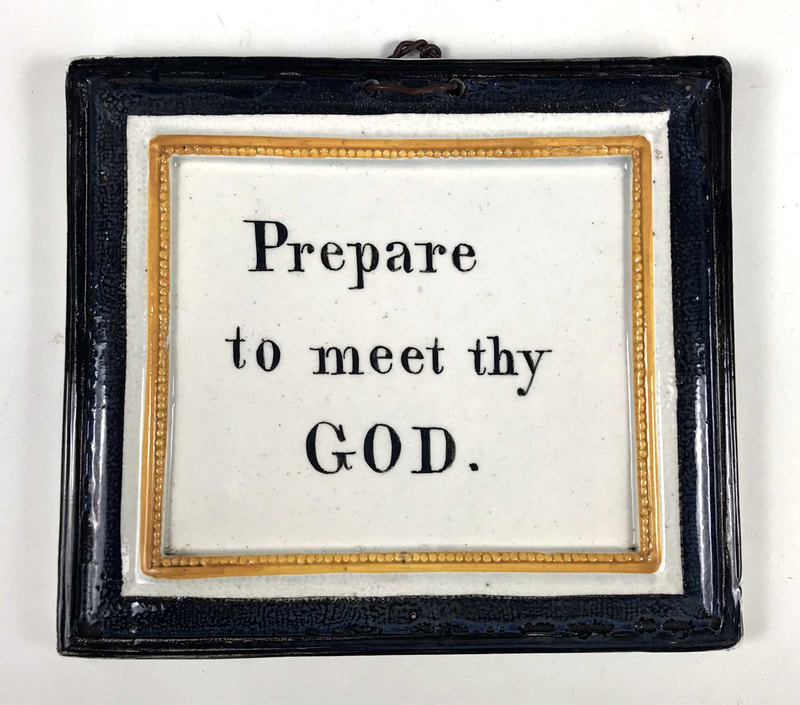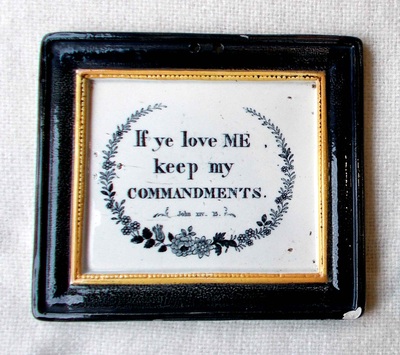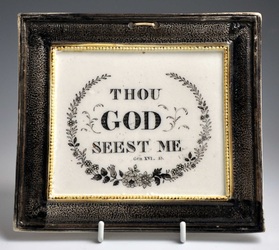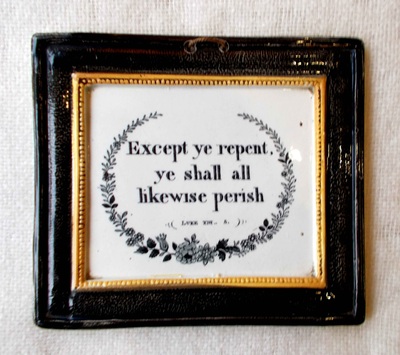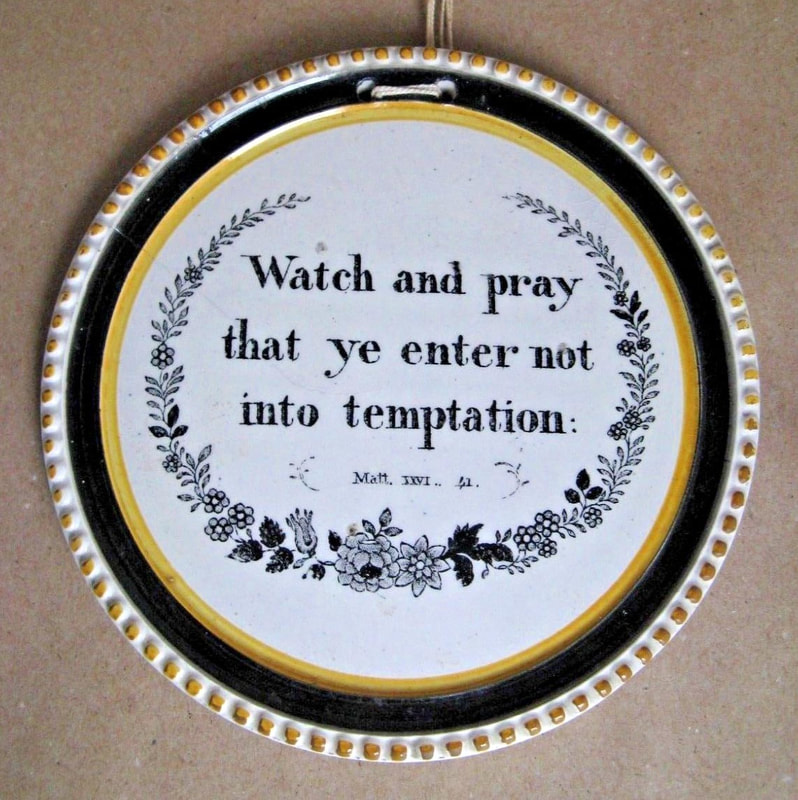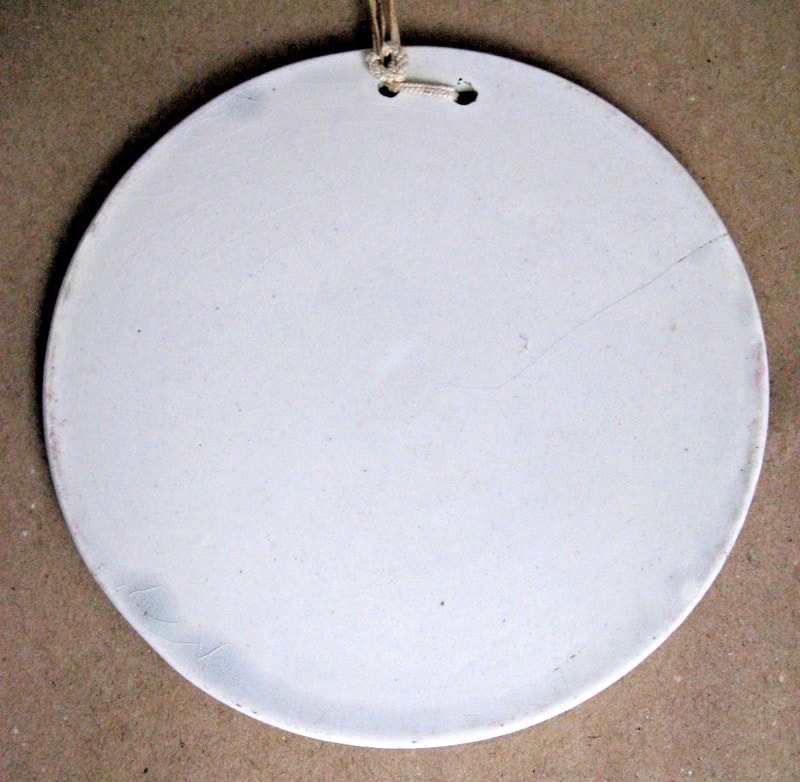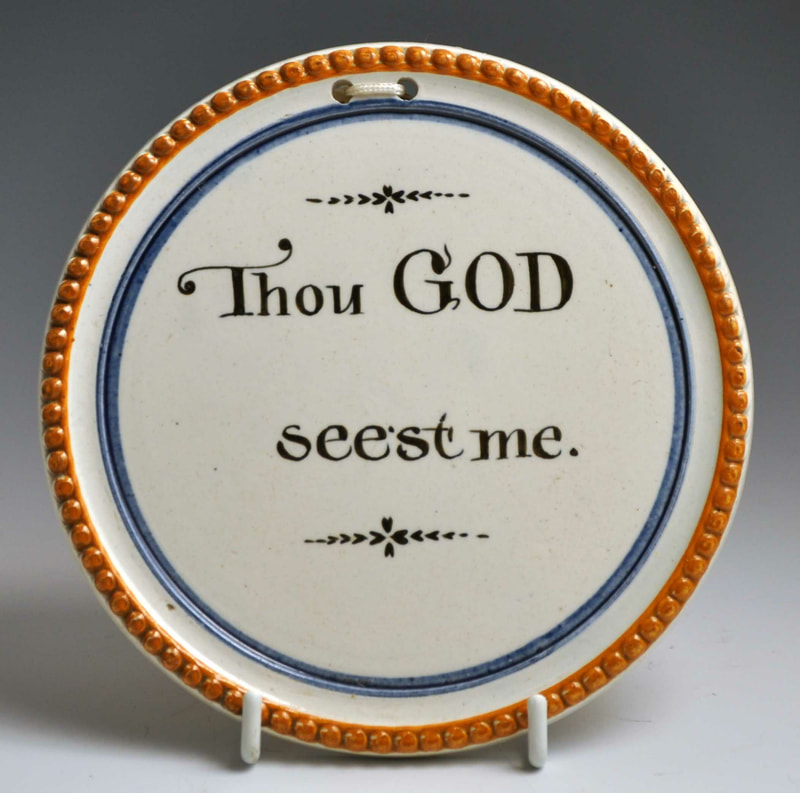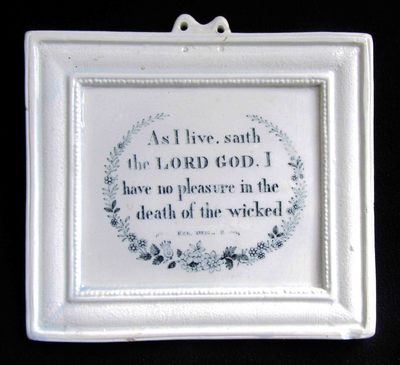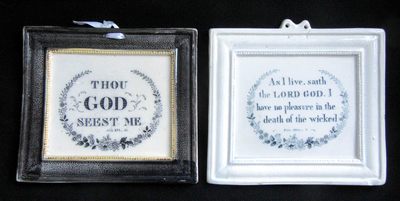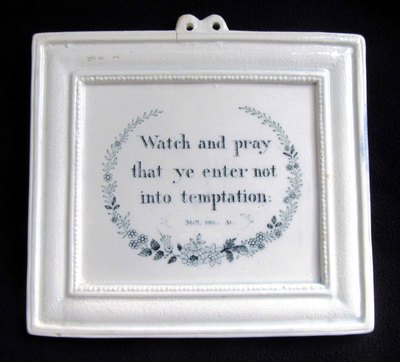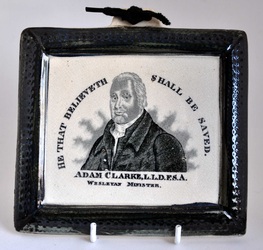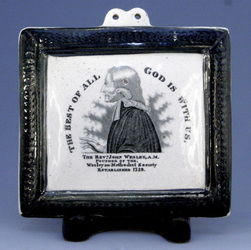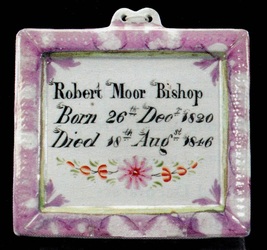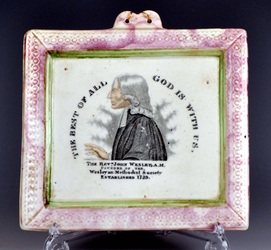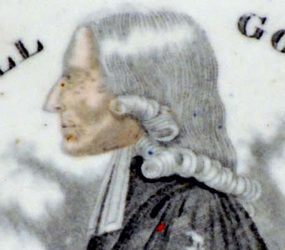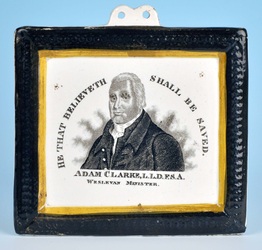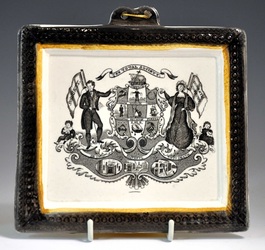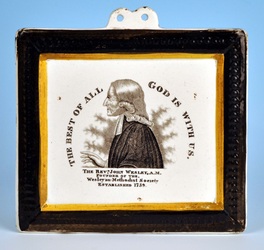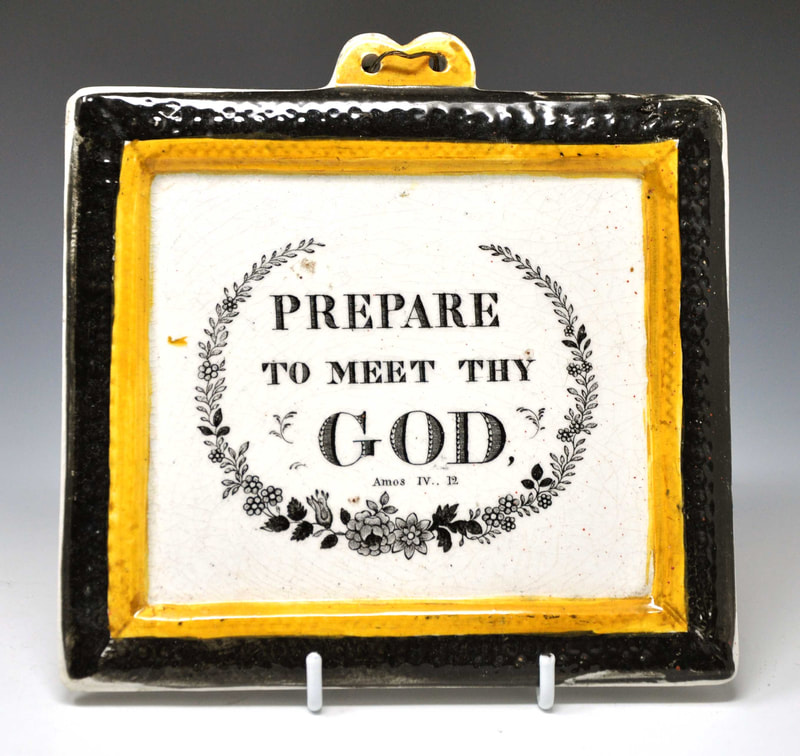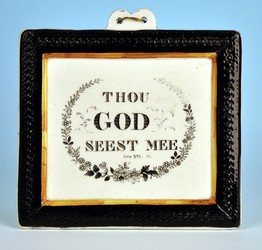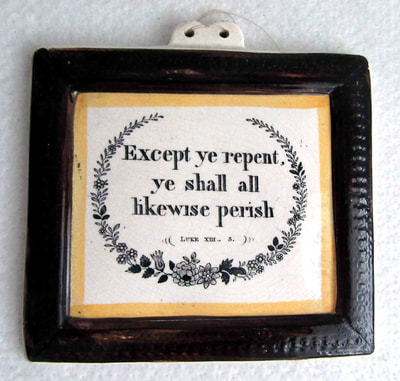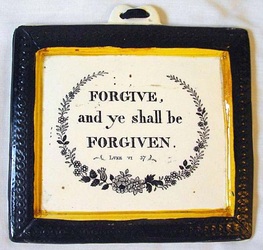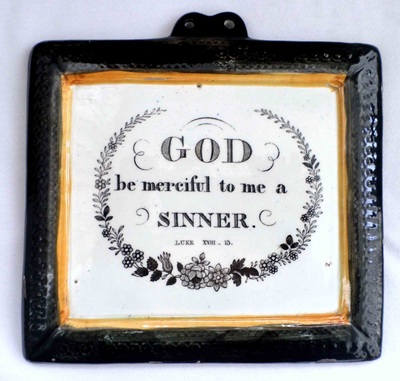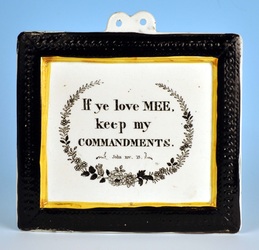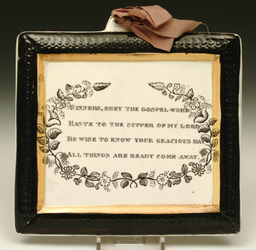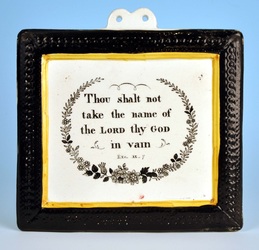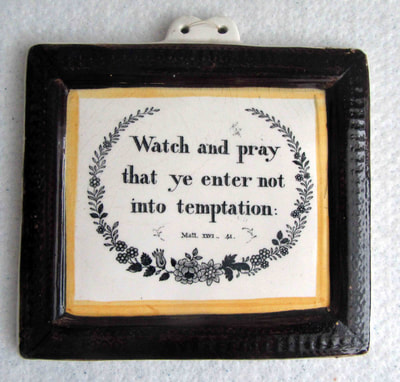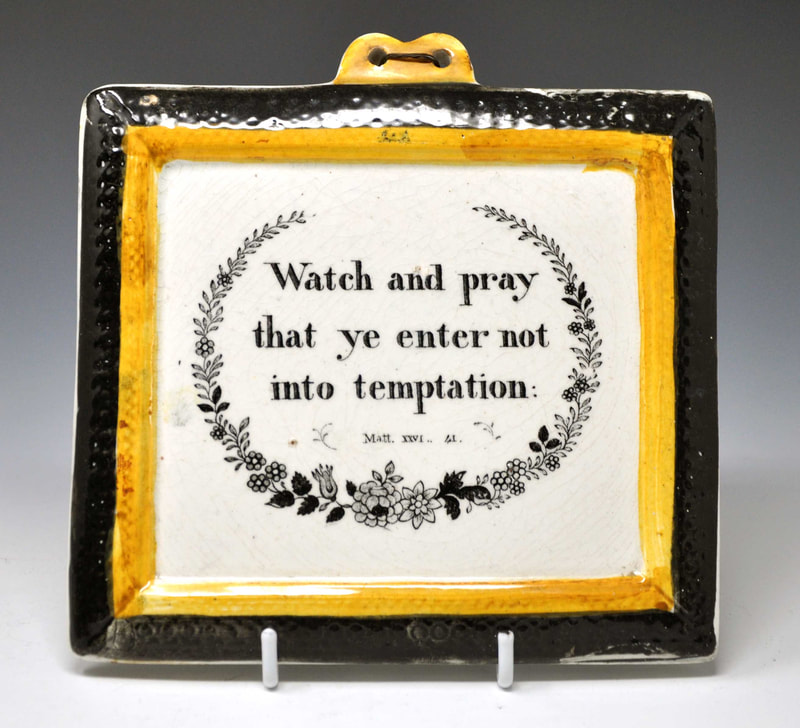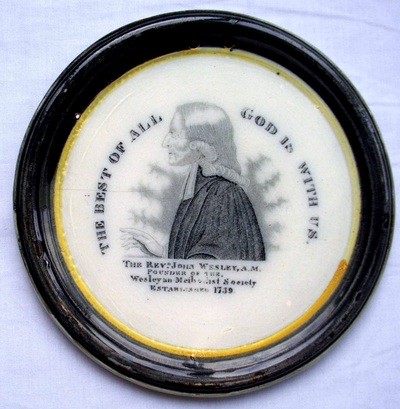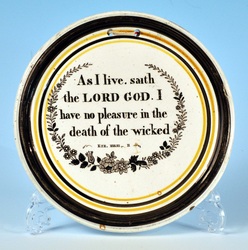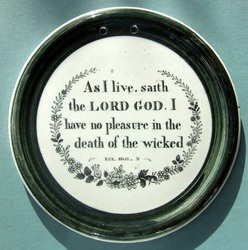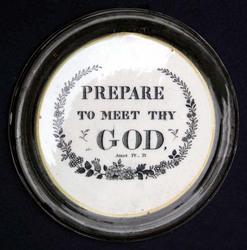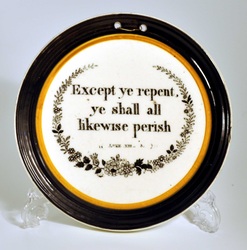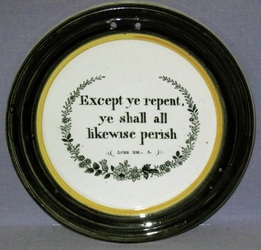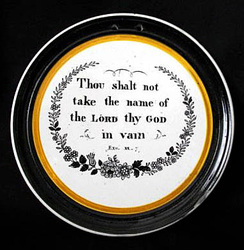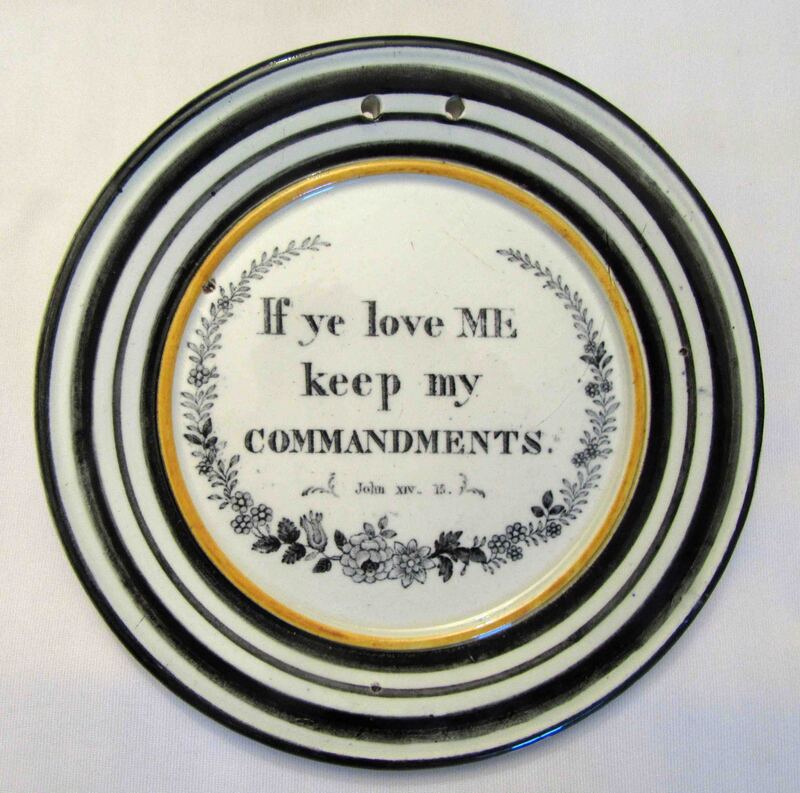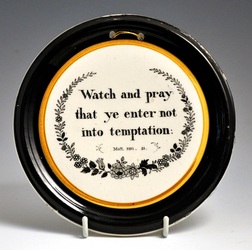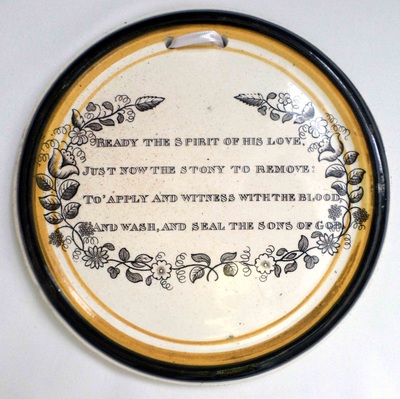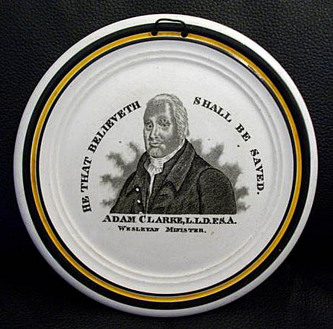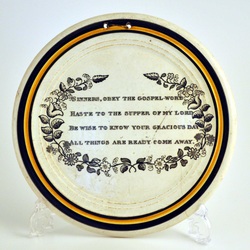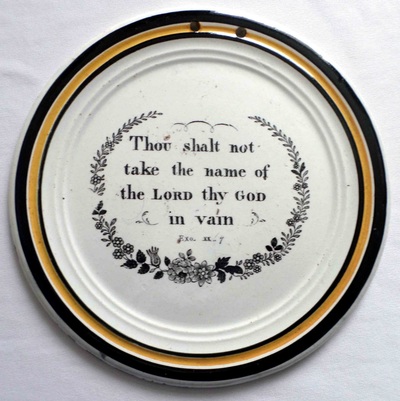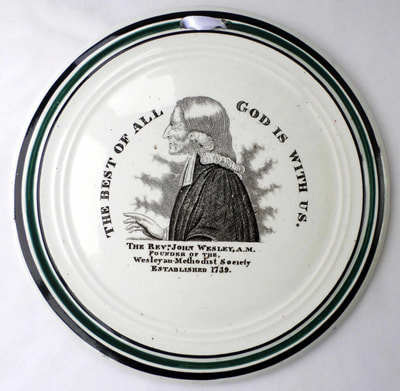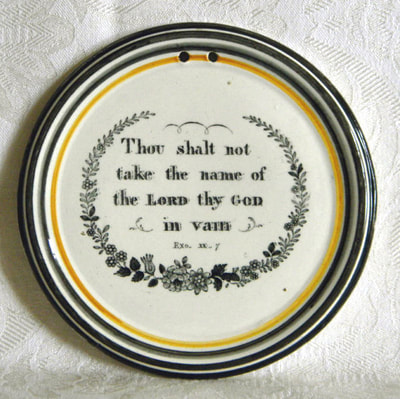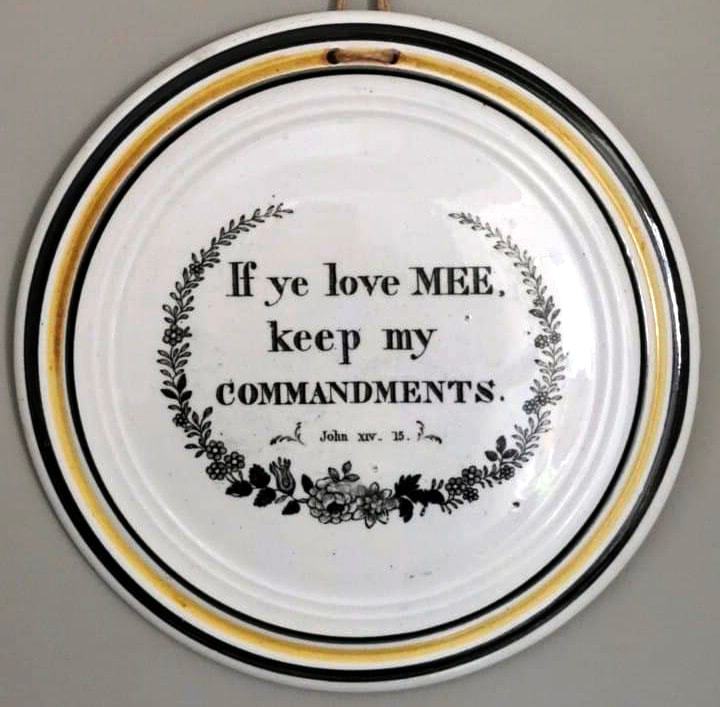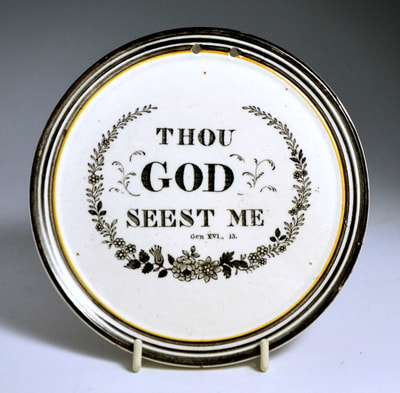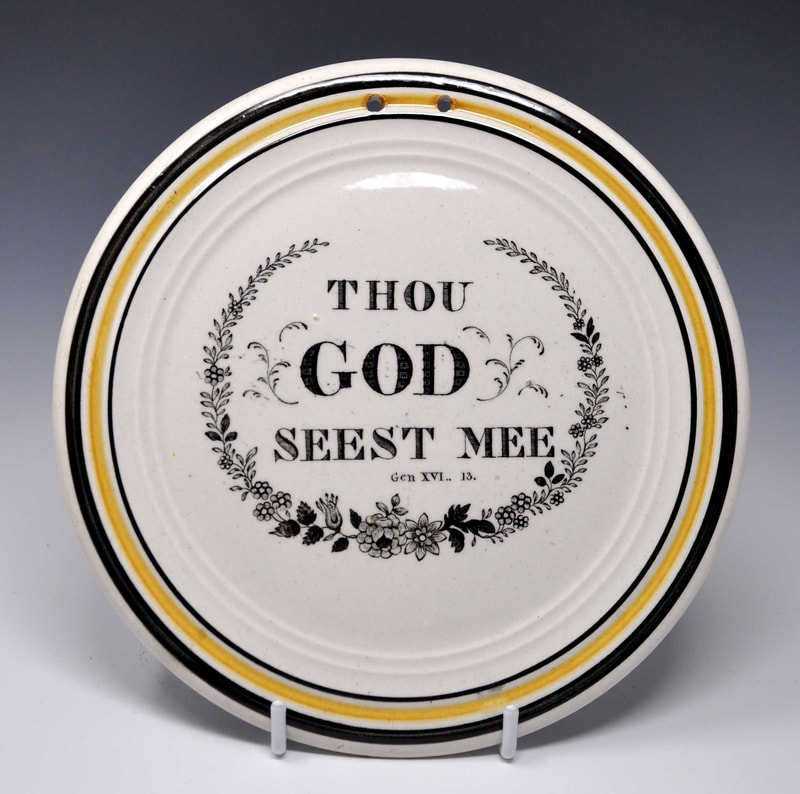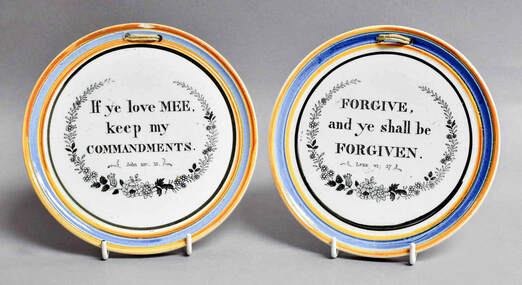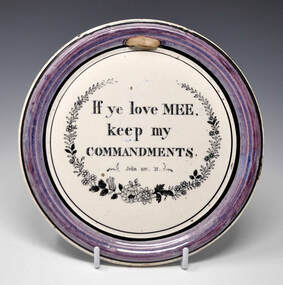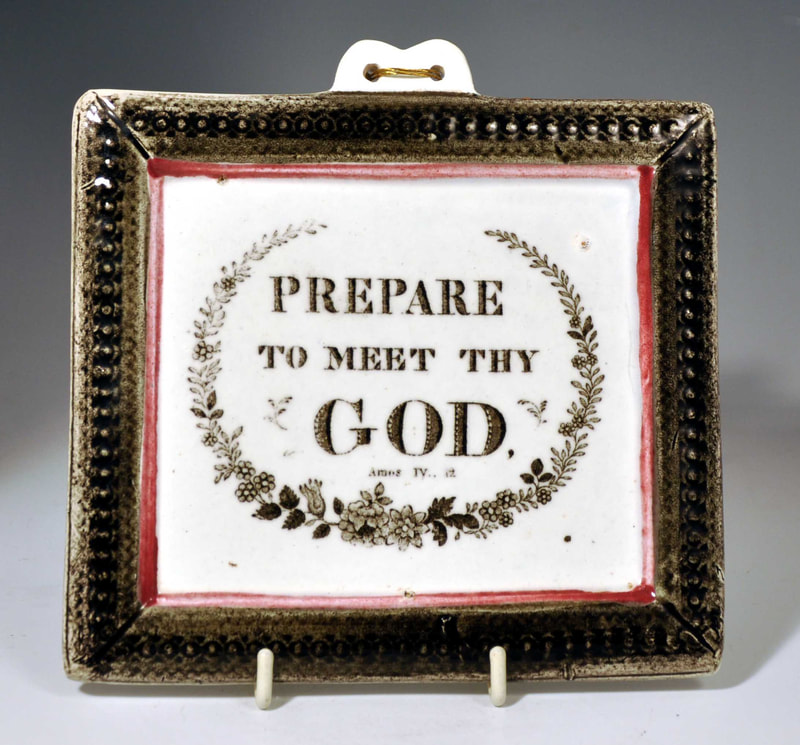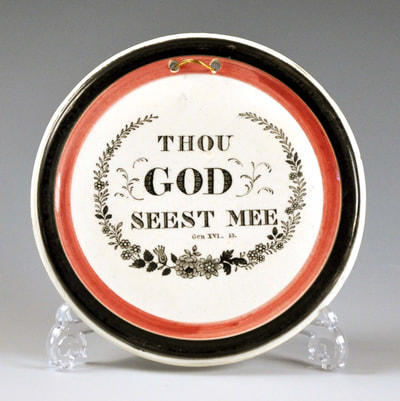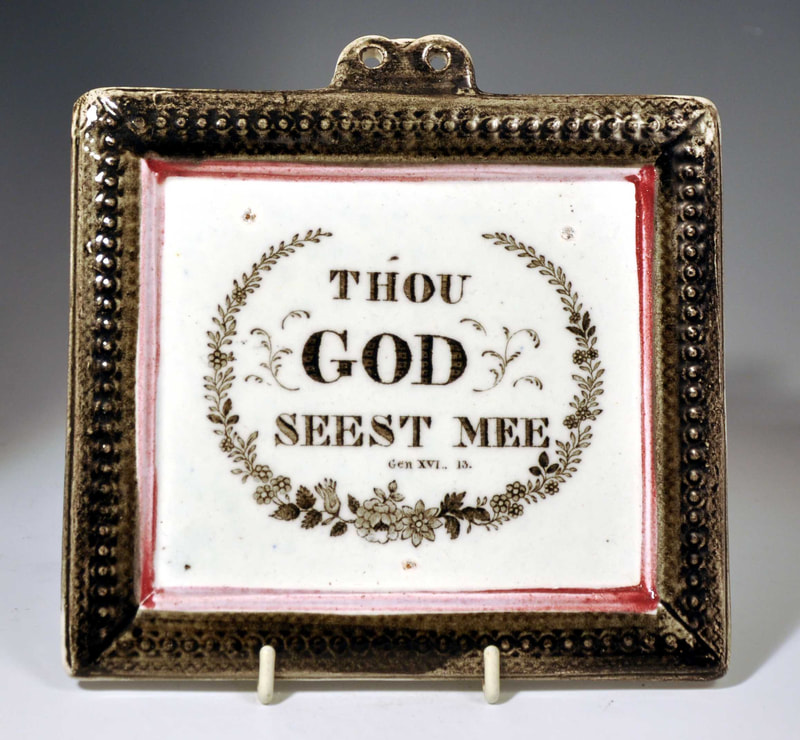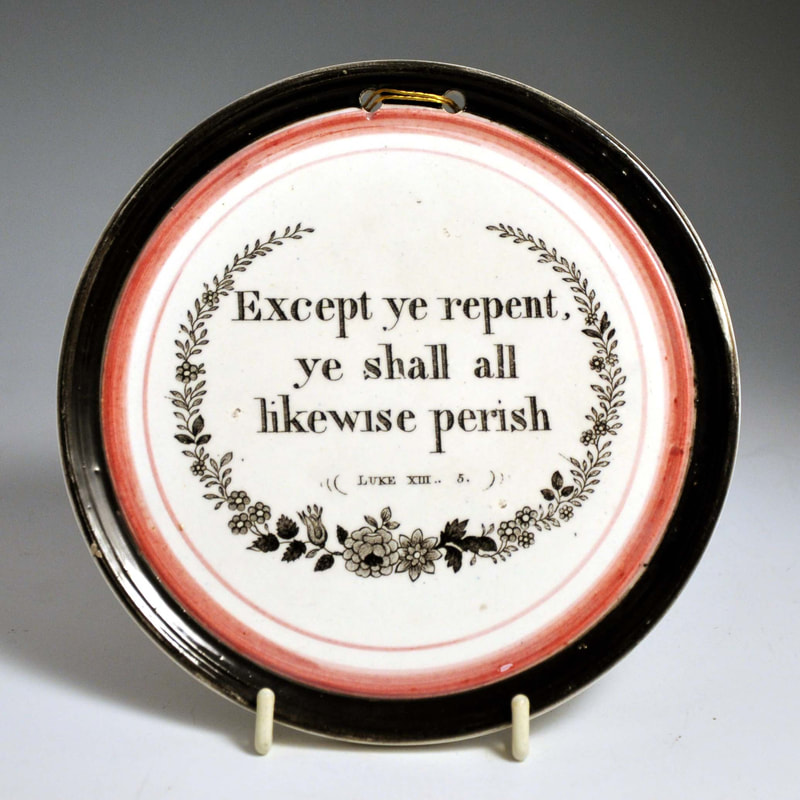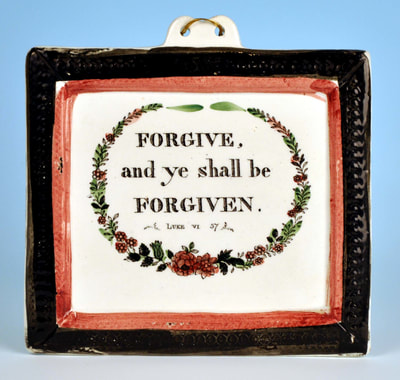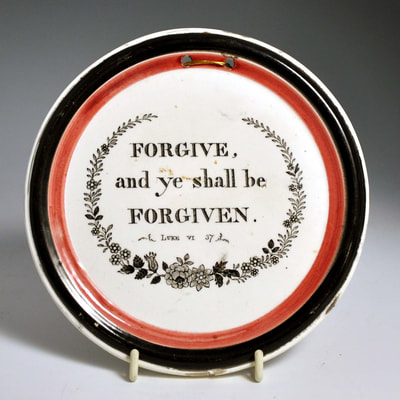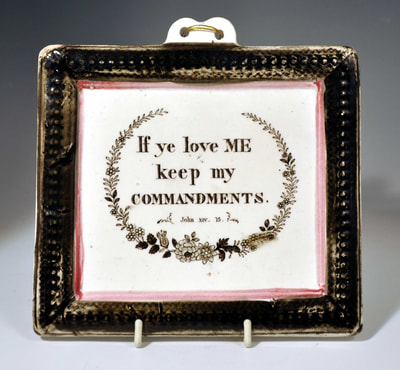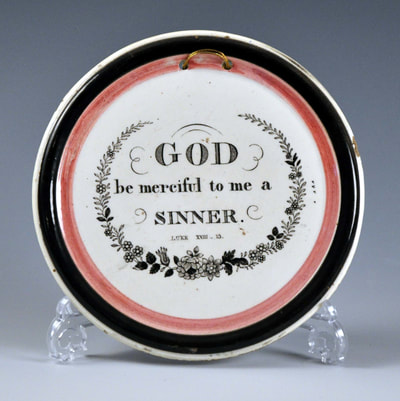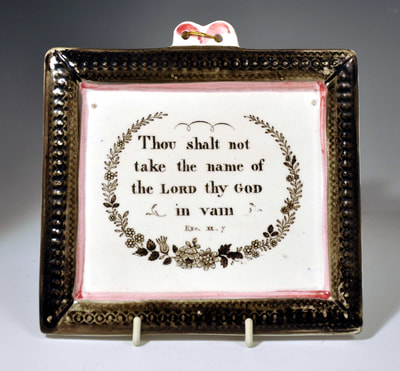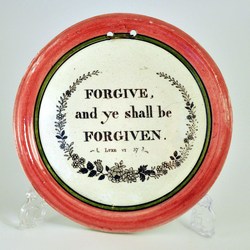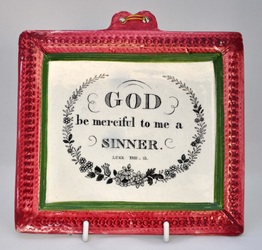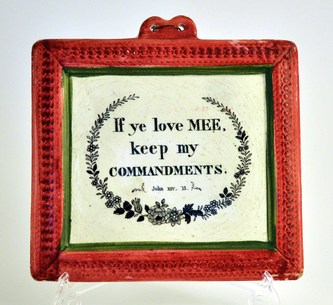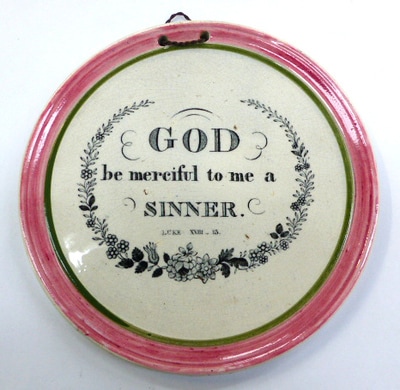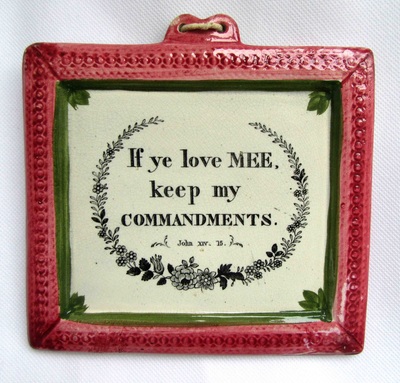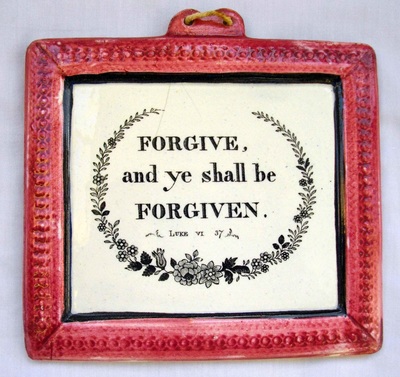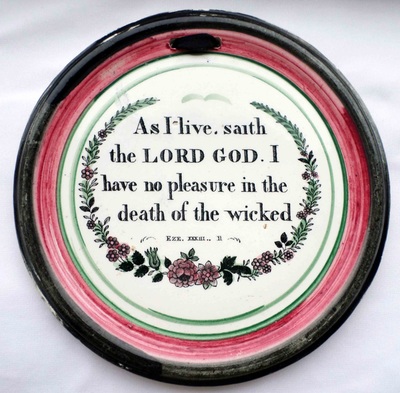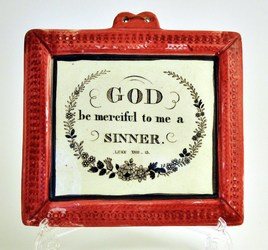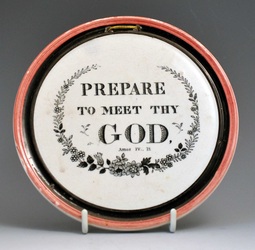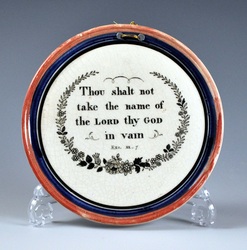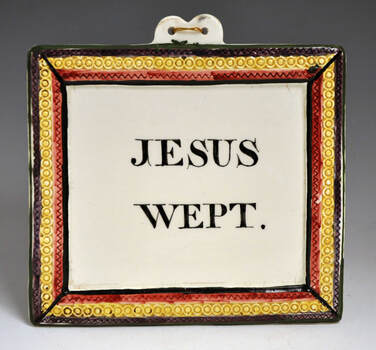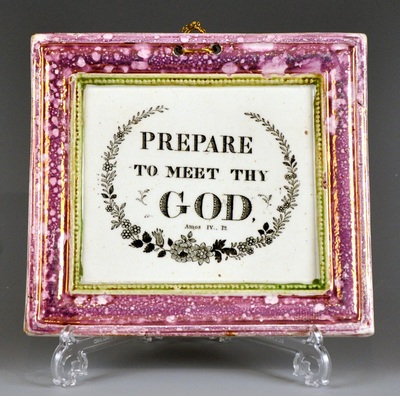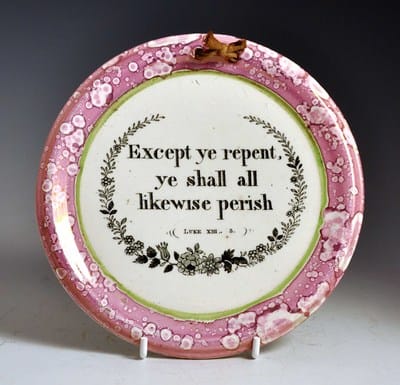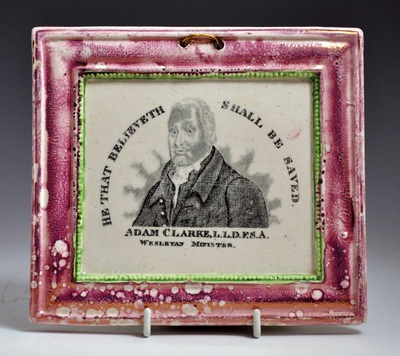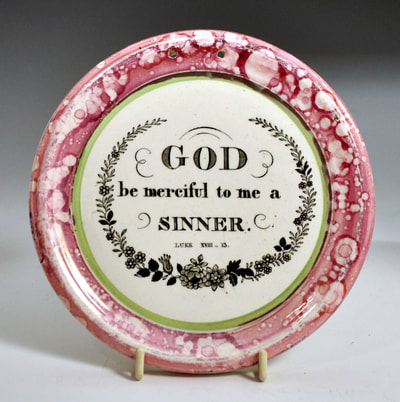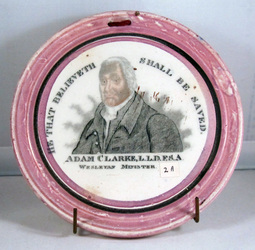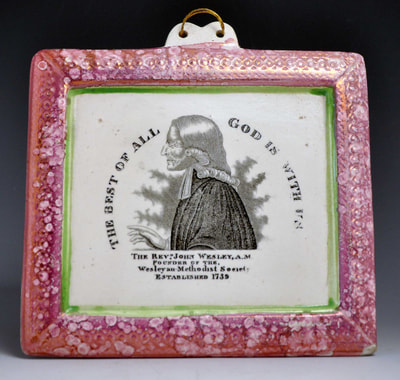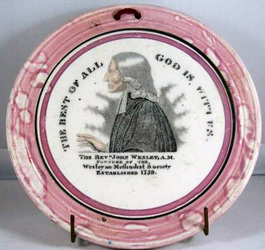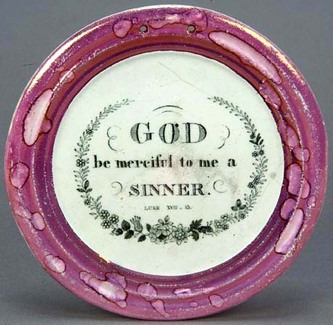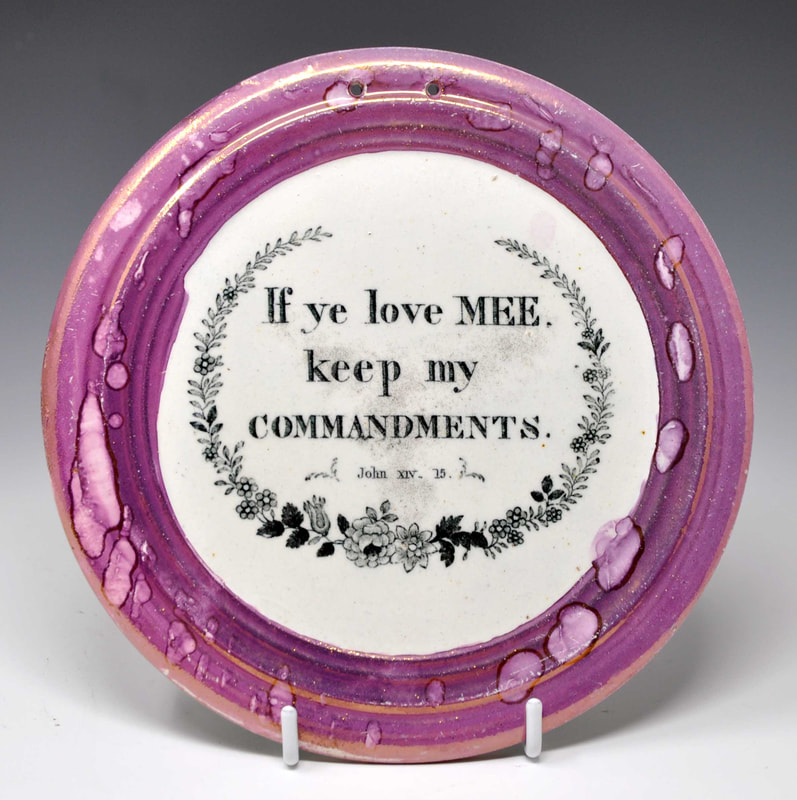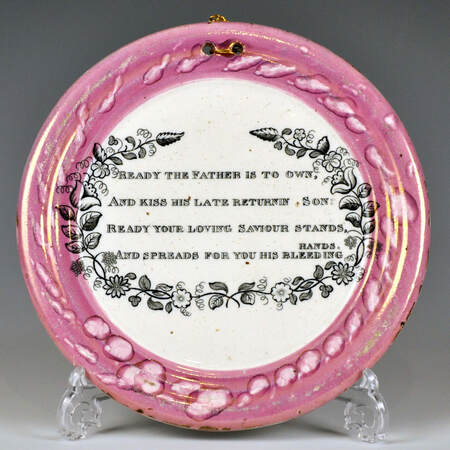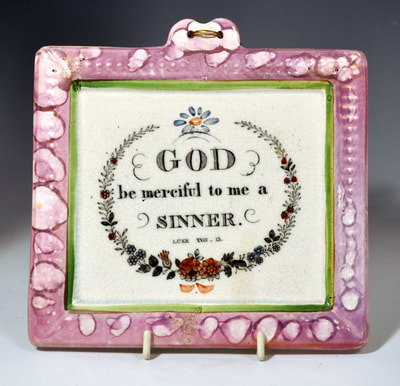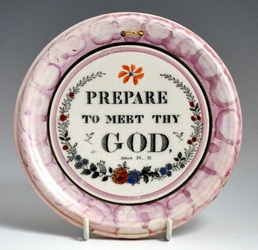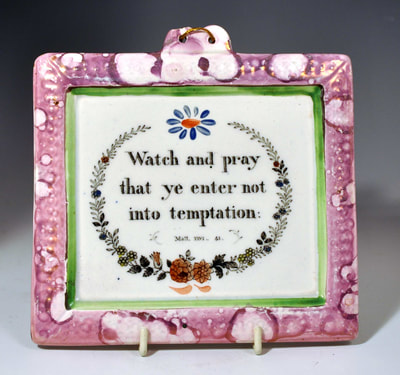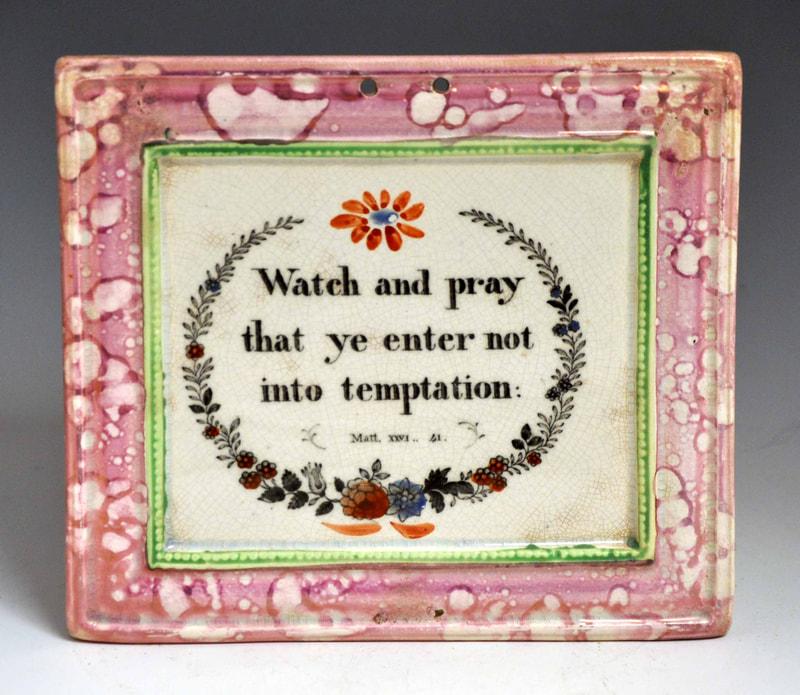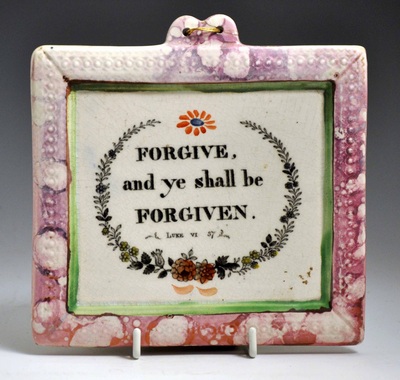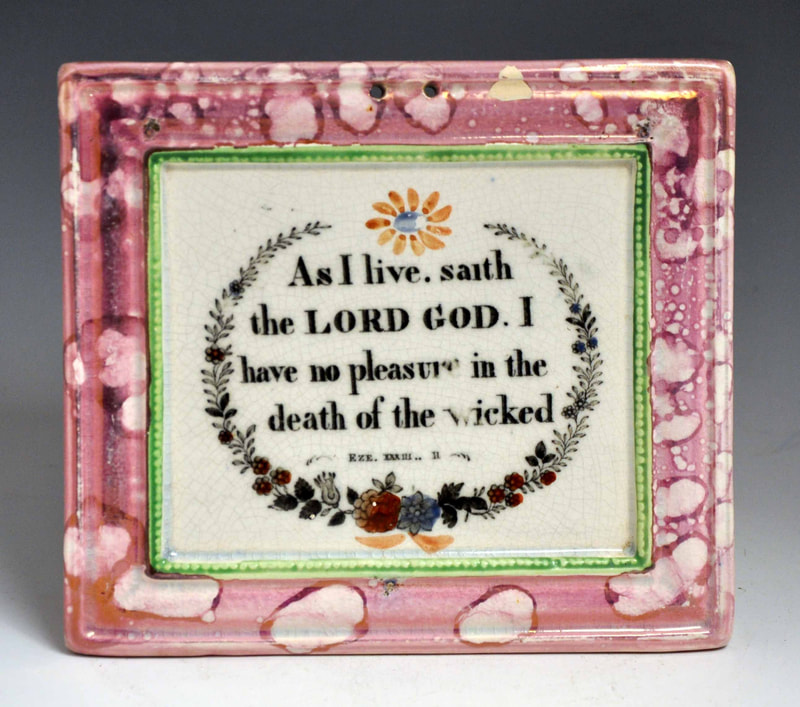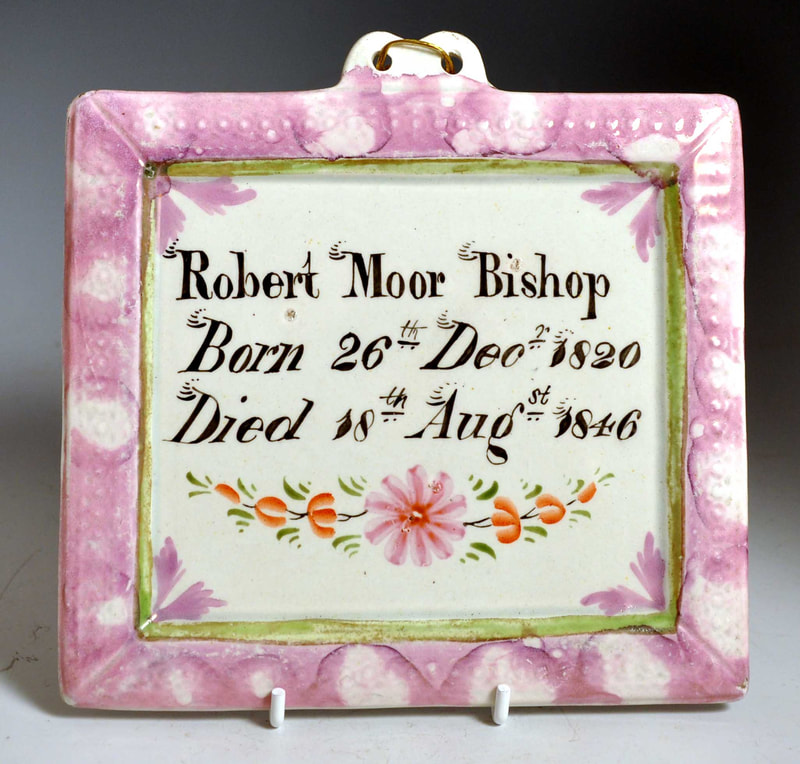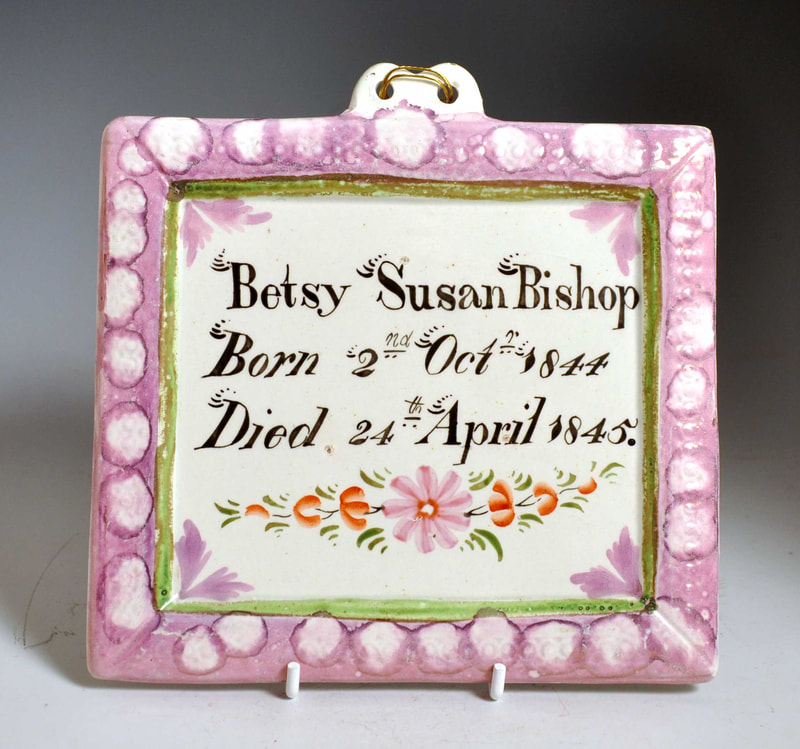Plaques attributed to Sheriff Hill Pottery, Gateshead
I've never seen a plaque with a Sheriff Hill Pottery impressed mark. All of the attributions on this page stem from two plates (below) with the impressed mark 'J.&P' for Jackson and Patterson of the Sheriff Hill Pottery, Gateshead, 1830–45 (N.B. R C Bell's 'Tyneside Pottery' book states the firm was run by Jackson & Patterson 1833–8, but records in the Sunderland Museum say 1830–45). Nearly all of the plaques below would have fallen into the Jackson & Patterson period.
The Wesley transfer shared by the plates and the plaques on this page is easily identifiable. It shows the Henry Edridge portrait with an extra line, 'FOUNDER OF THE', in the title (see top right detail). The transfer has a couple of tiny flaws which replicate on the plates and the plaques below. The top right of the letter 'N' in the word 'JOHN' is in-filled (see bottom right detail). Note also the heavy left foot of the letter 'M' in 'Methodist'.
The Wesley transfer shared by the plates and the plaques on this page is easily identifiable. It shows the Henry Edridge portrait with an extra line, 'FOUNDER OF THE', in the title (see top right detail). The transfer has a couple of tiny flaws which replicate on the plates and the plaques below. The top right of the letter 'N' in the word 'JOHN' is in-filled (see bottom right detail). Note also the heavy left foot of the letter 'M' in 'Methodist'.
The Tee Total transfer on the second plate above appears on plaques I've attributed to Sheriff Hill, with a distinctive yellow inner border, like beading on a picture frame. See more examples below.
The plaque forms on which the Sheriff Hill Wesley is found are very distinctive, and the range of other transfers that appear on those forms is fairly limited. Mostly they are scripture verses, but there are also Charles Wesley verses from the hymn 'Sinners, Obey the Gospel Word' (from 'Hymns and Sacred Poems', 1749). Below is a mug with the Adam Clarke that pairs with the Sheriff Hill Wesley, and a Charles Wesley verse.
With inner beading
Some of these plaques are particularly fine, with a moulded inner border picked out in yellow (or green). Some of the John Wesley plaques may pre-date 1830. An argument in favour of this is that it is much rarer to find an Adam Clarke on these plaque forms. Clarke plaques became popular after his death in 1832.
The Tee Total plaques are from the 1830s. The third Tee Total plaque below is of a smaller size, and has a different transfer.
Very rarely, these plaques appear with hand-painted verses. The first 'Prepare' plaque below is of a smaller size (like the last Tee Total plaque above). They also appear with the rarer religious verses typical of this pottery.
An attractive small plaque with beading on the outside of the border. The hand-painted plaque on the right appears to be from the same mould. Unfortunately, I haven't been able to compare them in the flesh.
The white plaques below appear to be experimental prototypes for a new form of plaque with a tab at the top with the holes for hanging. They are from the same mould as the plaques above, and the new appendages are hand formed, rather than moulded. They are the precursors of the plaques in the next section.
Plaques with tab for hanging
The plaque form below is unusual in that the hanging holes are in a tab at the top. The first of these plaques could have been made as early as 1832 to commemorate Adam Clark's death.
We know from the left plaque below that production continued to at least 1846. N.B. on these later pink plaques, the Wesley imprint looks faint and worn, commensurate with a production span of 15 years.
The majority of these plaques have black and yellow borders. For this reason they are often attributed as Staffordshire pottery. Compare them with the black and yellow Faith and Hope plaques on the Staffordshire plaques page. More research needs to be done to strengthen the attribution to Sheriff Hill. However, take a look at the items in this blog post. Few, I think, would attribute them to Staffordshire.
The final verse is from the Charles Wesley hymn 'Sinners, Obey the Gospel Word'. It is transcribed on the Charles Wesley hymns page.
Circular verse plaques
The same series of verse transfers also appears on a variety of circular plaque forms with black and yellow borders.
The next group of plaques are decorated with alternating rings of colour. The larger ones have a ridged border. The two top row verses are from the Charles Wesley hymn 'Sinners, Obey the Gospel Word'. They are transcribed on the Charles Wesley hymns page.
Below less usual blue and orange-bordered and purple-bordered versions with black inner rings.
Red-bordered plaques
Perhaps less common than the black and yellow plaques are those with red borders. These are sometimes falsely listed in auction catalogues as originating from Yorkshire or Scotland. Unusually, Prepare to Meet Thy God appears to be one of the rarest verses on the rectangular plaque form.
There are versions with wide red outer borders and green inner borders.
The plaques below have red and black (or in the case of the last plaque, blue) borders.
Below a highly unusual plaque with the shortest verse in the Bible framed by a multicoloured border.
Pink lustre plaques
Below, a rare pink plaque with a verse from the Charles Wesley hymn 'Sinners, Obey the Gospel Word'. It is transcribed on the Charles Wesley hymns page.
Pink lustre plaques with enamel flowers
Below, two memorial plaques for the Bishop family, made c1846.
Below an unusually large sized plaque of similar date and decoration. The second photo gives an idea of its scale.
